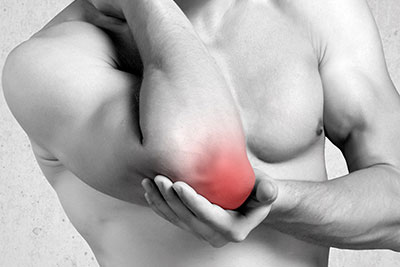Conditions
Back Pain & Sciatica

- Chiropractors are well placed and increasingly being sought to help manage back pain. Unfortunately back pain will affect nearly everyone at some point in their life and costs the NHS millions of pounds each year.
- The National Institute for Clinical Excellence (NICE) Guidelines recommend Chiropractic care for the treatment of persistent low back pain based on its proven effectiveness. Seeking treatment early is important to prevent acute problems becoming chronic.
- The cause of back pain is multi-factorial, often it is related to postural stress, repetitive tasks at work or during sport or a traumatic event. It is not uncommon to have leg pain associated with back pain or pins and needles into the leg.
- Your Chiropractor will identify the cause(s) of your back pain by undertaking a full physical examination using orthopaedic and neurological tests. Chiropractors specialise in detecting restricted joints or ‘dysfunctional spinal joints’ and will discuss appropriate treatment options with you.
Further Reading:
- Royal College of Chiropractors – New NICE guidelines on low back pain & sciatica
- NICE, National Institute for Health and Clinical Excellence Guideline for the management of Low Back Pain
Neck Pain

- Neck pain is very common in the general population. The human head weighs up to 5kg and for every inch of forwards movement the weight of the head on the neck joints and muscles doubles.
- It is therefore no surprise that with the sedentary jobs and lifestyles many people lead today that the incidence of neck pain is high, especially in those who spend much of their time on laptops or mobile phones.
- Loss of joint movement or muscular tightness can cause pain in the neck. It is not uncommon to have arm pain associated with neck pain or pins and needles into the fingers. In some cases the neck can also be a cause of cervicogenic headaches (see below).
- Your Chiropractor will identify the cause(s) of your neck pain by undertaking a full physical examination using orthopaedic and neurological tests. Chiropractors specialise in detecting restricted joints or ‘dysfunctional spinal joints’ and will discuss appropriate treatment options with you.
Further Reading:
Headache/Migraine

- There are a number of different headache types, some of which can be helped with Chiropractic care. Surprisingly for those headaches that can be helped it is increasingly common for people to think they have to live with them.
- A large number of people suffer from cervicogenic headaches which stem from restricted joints and nerve irritation in the neck (cervical spine). It is also possible to have an associated dizziness, so-called cervicogenic dizziness.
- The Bronfort report highlighted the effectiveness of spinal manipulation/mobilisation for the treatment of cervicogenic headaches and dizziness.
- Continued consumption of pain killers is not a healthy way to deal with headaches and is only directed at treating the symptoms without addressing the cause.
- Our Chiropractors are well trained in diagnosing those types of headaches that can be helped with Chiropractic care and those that may need onward referral.
- The NICE guidelines also recommend the use of medical acupuncture for certain types of headaches. All our practitioners are registered and trained in medical acupuncture.
- There are a number of trigger for migraine headaches, these can be related to stress, food, tiredness. Cervicogenic or tension-type headaches can be another trigger for migraines and we see many patients whose frequency and severity of migraines reduce with chiropractic care.
- Our Chiropractors may also discuss diet, lifestyle, and posture which is beneficial when dealing with headaches.
Further Reading:
- The Bronfort Report – Effectiveness of manual therapies: the UK evidence report
- NICE, National Institute for Health and Clinical Excellence Guideline for the management of Headaches
Joint and Muscle Problems (Sports Injuries)

- Both joint and muscle problems have the ability to cause pain and discomfort.
- A joint can either move too much (hyper-mobile) or it doesn’t move enough (hypo-mobile). A restricted joint is usually down to muscular tightness or joint degeneration.
- If a joint is not moving correctly it prevents the surrounding muscles from working as they should and in many cases the muscle then becomes weaker or tighter and consequently other surrounding musculature has to compensate creating an imbalance. Therefore joint and muscle problems often occur together.
- These problems can occur from repetitive tasks at work or a sports related injury.
- It is worth noting that injuries sustained in youth can have effect on the body later on. For example, spraining an ankle in your teenage years without the correct rehabilitative exercises decreases proprioception and balance on that side of the body. Over a period of time the knees, hips and low back have to compensate for this lack of balance and in some cases individuals notice pain in other areas that has appeared all of a sudden many years later.
- Chiropractors specialise at diagnosing joint and muscle problems. In some cases further imaging may be sought. A package of care will be offered and tailored to your needs, this will involve restoring normal movement of the joint whilst stretching and strengthening the surrounding musculature.
